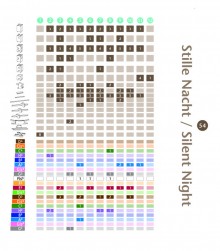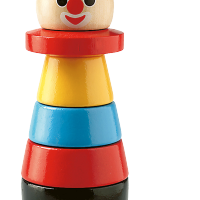Back in 1969, cellist and composer Samuel Langmeier came up with a problem – he had seen a marble run in a toy shop that would hit three musical chimes. Being a musician, he asked himself: could he create a marble run where all 12 tones were available, and the interval of timing between each was flexible? The answer – his solution – was the Xyloba Musical Marble Run.
This toy won its first award in 1975, but despite its critical acclaim in design circles, it didn’t travel far beyond Switzerland for decades. As is often the case for working parents, Langmeier simply couldn’t find the time to look for a manufacturer in the midst of his busy touring career. Which perhaps explains why we didn’t have one in our musician-centric home on the other side of the world.
So a mere 40 years after it was first built, the next generation can now enjoy this brilliant learning toy.
Mathematical, musical, magical and pure playful genius – the Xyloba is an inspired toy that ticks so many boxes in the play-plus-learning adds up to loads-of-fun equation
So what is all the fuss about? Well, first there is the construction of the tower. Made up of different lengths of ‘run’ pieces and little towers that house metal tonal ‘xylophone’ blocks, this is part construction toy, part marble run and part musical instrument. The best way to describe it is to see it in action, so take a moment to watch the video of it here.
Next is the game of musical composition, with a whole world of melodies and rhythms available to explore. There are 20 different chimes, which range chromatically from G2 to D4, and which chimes you use and the order that you ‘install’ them will determine the melody that will play. As the marble rolls down the track, it strikes the individually mounted chimes; ramps of different lengths produce the rhythm. This helps your child to distinguish between pitches and intervals, and they can learn about different note values from minims to semiquavers as well as dotted rhythms. The chimes can also be randomly mounted and interchanged to create a less ‘ordered’ melody – even more fun!
However, just in case the composing all gets a bit too exhausting, Xyloba has also created a number of song ‘charts’ to guide you in the building of more familiar songs. By referring to the composition instructions, even the youngest of builders can construct brilliant tunes.
Manufactured in the Weizenkorn Foundation’s sheltered workshops in Basel, the musical marble runs use raw wood and each individual Xyloba part is drilled out, cut and sanded before being packaged for delivery.
Good For… manipulative dexterity, problem solving, reasoning, recollection/memory, scientific concepts, mathematical reasoning, melodic reasoning, rhythmic reasoning, musical composition
Keep in Mind… If you have babies or toddlers around, you are going to want a safely out-of-reach dedicated space for this potentially orchestral sized composition
What Kids Love The set up can be a bit demanding, but when that marble finally rolls down its musical runway, your child’s proud, triumphant smile will reveal all
What Parents Love If your child loves building or construction and has a penchant for a tune, then this will deliver hours and hours of non-screentime fun. And of course, there is so much learning going on at the same time. Basically this toy is a win-win-win for you and your kids.
Awards Winner of the Bronze Medal at the International Exhibition of Inventions (1975), Spiel Gut, Exellent Produkt, ASTM International
Designer Details Samuel Langmeier is the man behind the Xyloba Musical Marble Run, which he started creating in 1969 and patented in 1973. A cellist for the Tonhalle Orchester Zürich Langmeier is often touring throughout Europe, the US, Japan and China. He is also a chamber musician and composer, and of course a toy inventor.





























































